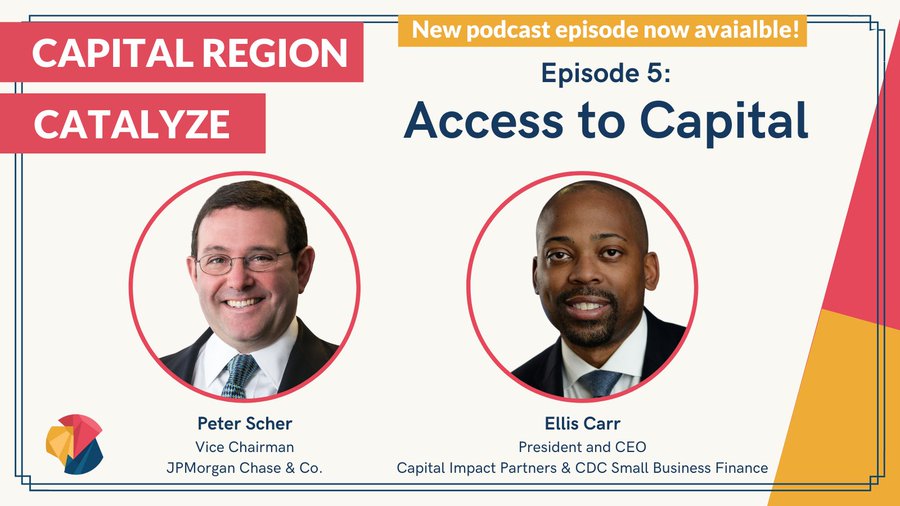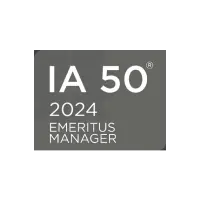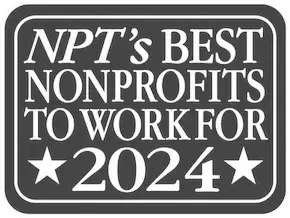PODCAST: Catalyze – Access to Capital for Underestimated Communities
In August, our President and CEO Ellis Carr participated in “Catalyze,” a podcast of the Greater Washington Partnership. “Catalyze” brings together leaders from Baltimore to Richmond who are working to make this the most inclusive growth region in the country. It features leaders from across the Capital Region in conversation about how business is taking a stand to catalyze solutions to close the racial equity gap.
Ellis sat down with the Greater Washington Partnership’s CEO J.B. Holston and Peter Scher, Vice Chairman at JPMorgan Chase & Co., for a conversation about how Community Development Financial Institutions (CDFIs) and traditional financial institutions can take learnings from work in other regions and foster inclusive growth for underestimated communities in the Washington Metro area.
Listen to the podcast here, or read the transcript of their conversation below. For more information on how CDFIs create impact for disinvested communities, read our stories and learn more about our mission-driven financing and programmatic focus.
Peter Scher: We have to look at economic growth as a region, we have to collaborate, we have to understand that there are projects that may sit in Virginia that will have enormous benefits for DC and Maryland. This does not have to be a zero sum game. If one jurisdiction can win, we can all win.
Ellis Carr: To me, the most important, the single most critical component is a common vision. The greater DC area has an enormous amount of both CDFIs and MDIs that are really focused on underestimated communities across the region.
JB Holston: Welcome to Capital Region Catalyze, a monthly podcast from the Greater Washington Partnership featuring thought leaders who are shaping the future of our region. The podcast focuses on inclusive growth from Baltimore to Richmond. I’m J.B. Holston, your host and the CEO of the Partnership. Today, we’re going to talk about financial institutions that are critical to sustainable and equitable growth: CDFIs, and MDIs. CDFI, our Community Development Financial Institutions, and MDIs are a subset of those which are minority deposit institutions.
Today, I’m pleased to be joined by Ellis Carr and Peter Scher. I’d love to have each of you introduce yourselves and share a bit about your professional backgrounds and the path that led you here today.
Ellis Carr: I’m Ellis Carr, President and CEO, Capital Impact Partners and CDC Small Business Finance. We provide holistic community and economic development across the country in underestimated communities. I’m also an advisor to the Greater Washington Partnership’s Inclusive Growth Advisory Committee.
So, I actually have been at Capital impact for just about nine years. Prior to coming to Capital Impact, I spent a little over a decade and a half in for-profit financial services. And I came to Capital Impact because I wanted to use my time and talents to really help and support other people. And so, a CDFI was a great destination for that. CDFIs are mission-driven financial intermediaries who work in support of the community, really to create economic opportunity. We provide things like financing and technical assistance for affordable housing, community facilities, small businesses, and alike.
JB: Thanks, Ellis. Peter.
Peter Scher: My name is Peter Scher. I’m the Vice Chairman of JPMorgan Chase. I oversee our firm’s corporate responsibility efforts as well as Morgan Health, a new initiative focused on health care. I also chair our business efforts in the Mid-Atlantic region. And most importantly, I’m the chair of the board of the Greater Washington Partnership. I’ve been with JPMorgan about 13 years; most of my career has been in the law and politics, and spent 10 years in government, the federal government here in Washington, D.C. I became the head of corporate responsibility 10 years ago. I have had the privilege of working with people like Ellis, around the country and around the world on issues around economic development and economic growth and addressing some of the big social divides that are facing the country. And one of the things I’m most thrilled about is the opportunity to bring some of the lessons we’ve learned to this D.C. region.
JB: Thanks so much. It’s great to have you both with us today. Peter, you mentioned Detroit, and I gather that’s where you two originally met? Can you share a bit more about your work together there.
Peter: So back in summer, fall of 2013, JPMorgan decided to take a much closer look to see if there was something more we could do to help the revitalization of the city. Our firm had been part of Detroit for 80 years and has watched the ups and downs. And this period was definitely a down — the city was in bankruptcy, gone from 2 million residents to less than 700,000. And what we saw in the fall of 2013, was a new mayor who had just been elected in a write-in campaign on a platform of getting things moving and fixing things and working with a Republican governor and working with the business community and working with community groups to really make a difference. And it’s something that inspired us. And one of the things that we saw, as we evaluated the type of investments we were going to make, was how critical the role of CDFIs were in doing that. And in fact, the initial investment was $100 million, half of that went to two CDFIs — Capital Impact and Invest Detroit — because we felt that was the best way to leverage our resources and also reach the community in the most impactful way. And that’s when Ellis and I started to get to know each other.
JB: And Ellis, was Detroit the first place that Capital Impact Partners was working or was this one of many places?
Ellis: Prior to coming into Detroit, which was about 10 years ago, I think most would know Capital Impact as a national sector-based lender, so really focusing on education and health care, food and housing. And we were invited into Detroit about 10 years ago because we had a number of learnings across the country and we had a proven track record around being able to deliver capital at scale. So, Detroit was actually a first for us into a place-based initiative. And it actually has transformed the way that we do work today. You know, we were invited in by a bunch of local partners; we began to do kind of sporadic deals there. And over time, we really became part of the fabric of Detroit.
Over that 10-year period, we’ve invested about $270 million in Detroit through the efforts of Peter and JPMorgan Chase. It was really critical for us to get a lot of projects off the ground, because, at the time, when you thought about or considered the acquisition costs and you coupled in the rehab cost, they were actually more than the completed value of the project. So you needed time to allow the market to recover. So you had to take a longer term view. And so we needed to have patient capital to really be able to invest in the fabric of Detroit. And so, through the investments that JPMorgan Chase provided with us, we were able to leverage that capital six fold. So it really allowed us to kind of get almost $60 million. Now it’s out of capital out on the street at a time where a number of other large financial institutions actually step back.
JB: Wow, $60 million. That’s impressive. I’d love to know more about the type of business you lent to with that investment.
Ellis: For us, primarily in Detroit, I think the work started really in kind of mixed-use commercial real estate. Detroit has a great housing stock and a lot of land given the population decline. And so, you really had a lot of units that were in disrepair and or vacant that really needed to be revitalized. So, we would work with a lot of local organizations. And we would lend to both real estate developers and other entrepreneurs who were rehabbing these properties, and then bringing in local, small businesses to kind of occupy the retail space at the bottom.
We’re providing a range of affordability within the apartment units. And we also began to get into, for a variety of other things, recognizing that there was a dearth of incapacity across the ecosystem. We had to partner with other organizations to really provide capital to other community-based organizations as well, and also provide seed capital for development entities because there was a dearth of development entities that were really focused on the work that we were doing.
JB: Peter, you co-founded the Partnership, and you’ve been a pioneer on inclusive growth. But what are some of the similarities and some of the differences that we’re looking at in this region compared to the experience in Detroit?
Peter: Well, I think some of the similarities are on the challenges side. Ellis talked about affordable housing. We’ve talked about lack of access to capital, particularly for minority small business owners, skills training, you know, many of the issues that the Greater Washington Partnership is focused on. There are very few cities or regions, literally in the world, you can walk into that don’t have the same set of challenges. I think that the lesson for us – Detroit was a seminal experience for Capital Impact Partners. It was really a seminal experience for JPMorgan and how we approached economic development. And when Ellis mentioned becoming part of the fabric of the community – having that fabric in a cohesive, collaborative, coordinated way – that was the thing, the secret sauce: if you don’t have, it is incredibly difficult to make a difference.
And one of the interesting things when we first got to Detroit, whether I was meeting with the mayor or some of the, you know, city business leaders, everyone had their view. But then everyone said, ‘Go talk to Dave Blaskowitz,’ who was the head of Invest Detroit, one of the local CDFIs there. And the fact that they knew we have a lot of managers here, we got a quarterback who’s on the field, and that kind of collaboration, it was essential to the success and the revitalization of the city. And it gave us an opportunity to really help scale some of the programs and ideas and projects on the ground.
And that was really the premise when Russ Ramsey and Ted Leonsis and I started talking. One of the challenges we have faced historically in this region is three separate jurisdictions going their own way. And we have to look at economic growth as a region, we have to collaborate, we have to understand that there are projects that may sit in Virginia that will have enormous benefits for D.C. and Maryland; this does not have to be a zero sum game. If one jurisdiction can win, we can all win. And so that’s been the key. And frankly, I think it’s been one of the things that’s been so inspiring about the work in this region now, is we see so many companies, education institutions, CDFIs and other organizations, MDIs like Harbor Bank in Baltimore, really coming together and saying, ‘let’s develop a strategy for this region,’ which is really what Detroit did.
JB: Peter, you mentioned that this was kind of the starting point for a lot of JPMorgan Chase initiatives in the category, and I know one of those is the Entrepreneurs of Color Fund. Could you talk a little bit about how that came to be, what its focus is, and then how it works with folks like Ellis’ Capital Impact Partners.
Peter: So, when we initially went into Detroit with our $100 million investment, to be perfectly honest, I wasn’t thinking a lot about small business. But we, you know, we made some investments in some local incubators. And you know, Ellis was talking about some of the work in the city to rebuild housing stock. Minority entrepreneurs wanted to be part of that, but couldn’t. When we first started, I would do quarterly reviews with the mayor. We have all of these minority small business owners who want to be part of the revitalization, but they can’t get the capital from normal banking channels.
And so we went off and basically said, Well, let’s think about how we can do this. It was hard at this time to do it, it’s still hard in many cases to do this through some of the regulatory constraints that banks have. And so, we said, let’s create a new mechanism to do this. And it started as a $6 million investment with the Detroit Development Fund, which is another CDFI. And in the first two years, we did about 50 loans that had two defaults, which is a pretty good track record. Ultimately, that scale to $25 million in the city, we’ve now made it a national program and expanded it with Capital Impact to D.C., to Chicago, to San Francisco, South Bronx. And just last year, we announced we were going to make it a national program. And it just shows the power: if you can get capital to the people who want to be part of the economy, and if you can get the training and the connections, it could just, it could have an exponential impact on the development of a community.
JB: Ellis, I was struck that Forbes is characterizing the alliance between the organization and CDC Small Business Finance – now one organization – as the most transformative merger you never heard about. So, could you talk a little bit about what that merger was about, what it means to bring these institutions together.
Ellis: As we worked in Detroit, I think we realize the power that we could bring to a place, by bringing the totality of the work that we’ve done across the country, and focus that and align that with a common strategy. When we got to Detroit, a lot of the work that we did was in the housing space, and broadly defined as economic development. Small businesses weren’t something that we were focused on. But as we began to kind of refine our approach, we began to hear more and more about how Detroiters that grew up in the city wanted to be part of the revitalization. But they couldn’t. And one of the ways that was important was that folks wanted organizations like Capital Impact to really invest in them.
And so we began to think about how we could also both invest in the infrastructure in terms of buildings, but also people. That really launched the Equitable Development Initiative, which is really focused on providing technical assistance, training and mentoring, and capital for real estate developers so that folks who were from Detroit, and who live in Detroit could actually begin to participate in the resurgence of that area, and actually drive it themselves. And so that really led us to kind of beginning to think about our focus on racial equity, how we could create opportunity beyond the building and the services that come out of the building.
And so, that led us to CDC Small Business Finance. We began to have conversations with them, and we had the opportunity to really kind of dream about a vision of being able to create not only community development, but community and economic development solutions at scale, centered in place. CDC is the largest mission-driven SBA lender in the country. And thinking about a way to kind of provide the scale and capacity that they provide, coupled with technology, really was something of interest to us, not only for ourselves around how we could drive impact and scale in communities, but how we could also empower others who we’re standing side-by-side with within the community to also access and harness that technology capacity as well.
JB: Let’s talk a little bit about some of the small businesses that are directly benefited by this. And Peter, what motivates you about some of the small businesses? What are some of the stories about some of the small businesses that you see affected by this work?
Peter: What motivates me from a macro level is, if we’re going to solve the economic challenges in our region, small businesses have to play a big part in that, and they’re close to the community. They’re part of the community; they create jobs and employment and opportunity, and this is about opportunity. And so, it’s a huge part of the sector and we actually track how much small business growth drives economic growth in community. But from a personal perspective, you see the passion and the commitment and the dedication that a lot of people, who haven’t had an opportunity, want to have. And I’ll tell you one example: just here in our region, Pinke Reddick, who is a caterer who I met two or three years ago. And at the time, she had four people working for her, and she now has 26 employees. She got a contract during the inauguration from the D.C. government to provide 10,000 meals. And she also just got a contract from the Department of Defense.
Pinke Reddick: My name is Pinke Reddick, or Chef Pinke. My business is Pinke’s Eats LLC. We’re a food experience company. Our slogan is “Eats that Excites the Eyes.” I grew up spending summers with my grandmother, my granddad in Georgia. We used to go into the garden, pick food up out of the garden, six o’clock in the morning. Me and my grandmother would make breakfast, lunch, and dinner. And I did that for, like, three or four summers. That birthed cooking to me; I was like 12,13, and 14. I would say food is love.
When people are happy, they eat; when people are sad, they eat. Food is love. When somebody makes the food, they’re happy. And you just enjoy it because you can feel the love through the food. And right now, I live in Ward 7 in D.C., and we don’t have many food options at all. I’m 35. I went to school there, I graduated there and bought my first house there, and they’re still McDonald’s, Wendy’s, and the carryout. They are trying to bring some options to Ward 7, but 35 years… That’s what we had over there. And then I worked for a large food chain managing for 10 years. And it was exciting. But I was working 70 hours a week and pay for 50. And I just felt like I could do it for myself.
So I started 2016. And then March of last year, like everybody else, we just completely shut down, nothing going on. So the Coalition for Nonprofit Housing and Economic Development (CNHED) is an organization that’s an anchor partnership, and they’re funded by JPMorgan Chase. So the president there called me a month in, and was like, ‘how are you panning out?’ and I was like, we have absolutely no work, nothing going on. And we started producing meals for local hospitals and nurses. And they basically funded meals for the nurses and emergency staff for about two months to just get the ball rolling, get us back in the door, bring some of my team members back in. And then, when that started, and World Central Kitchen picked up on what we were doing, they reached out and we were able to partner with them as well. And now, we have 26 employees.
Going from, oh, I may not be in business ever again to JPMorgan funding some food opportunities and allowing us to show our capacity to partner with World Central Kitchen, then swinging back around to D.C. government and Department of Defense, being able to secure some contracts. And we’ve survived, we survived. Things are opening back up; we’re booked for the month. We have a food truck now. So we’re just really growing in all areas. I’m most proud of having a profitable, sustainable business. But nobody in my family has ever been bold enough to do that. And everybody was scared. And my mom looks at me every day and she says, I can’t believe you, girl, like, I would have never done that. But just being brave enough to start my own business and be profitable, and hire other people and give them opportunities. I think I’m just so proud of that.
Peter: In this region, there is just an ocean of opportunity; in a sense, direct spend to small businesses that want to grow and want to create employment, and just think of what that can do for this region. As you said, our goal is to make this the most diverse and inclusive region in the country. We think that will attract more investment. If we’re going to do that, small business – particularly small business in lower-income parts of our region – are going to have to be a really critical part of it, and it’s going to be capital, and it’s going to be connections to big contracts, and it’s going to be technical assistance, all of these things. And if we can get the kind of collaboration that we’re seeing through the the work of the Inclusive Growth Council, I think we can achieve enormous progress here.
JB: Ellis you’ve been on the front lines of this work for a decade. What’s missing from our region in particular? What are the gaps that we need to fill to deliver on our promise of being the best-in-class in the country in this area?
Ellis: To me, the most important, the single most critical component is a common vision. Because all of the things that we mentioned and we know about this region, and all the assets that it has within it, can’t be fully utilized if we don’t have that broader vision that we’re all buying into. There’s a great representation of CDFIs in this region that are clamoring for some alignment around a common vision. D.C., actually in the greater D.C. area, has an enormous amount of both CDFIs and MDIs that are really focused on underestimated communities across the region.
Peter: I hadn’t heard that term: underestimated communities. I love that. That’s a great…I’m gonna steal that, Ellis. I love that.
Ellis: I stole it from someone else, so feel free.
Peter: And I’m glad Ellis brought up MDIs because you know, there are a number of MDIs in the region, throughout the region. Harbor Bank in Baltimore is a partner for us on the Entrepreneurs of Color Fund. You know, one of the important things that we had to recognize is, as a large global bank, we are not going to be as close to the people in these communities. And so, rather than just trying to knock against that wall, we have to reach the underestimated people. And if the best way to do that is through a Capital Impact Partners, or WACIF, or Harbor Bank, that’s what we have to do. And I think this is where the Partnership can make an enormous difference. We need to all sit at the same table.
I mean, if we can increase the pie, there’s plenty to go around. Let’s create the money, let’s get the resources, let’s get the technical assistance. So I think the opportunity right now for all of us, all the big financial institutions, and the CDFIs and the MDIs is to really come together around a common strategy. I think that’s what we should be doing. And I think, so far as you know, we’ve gotten great response from the other financial institutions, and everyone’s checking their parochial interests and the egos at the door. And look, the reality is – Ellis talked about this – it takes a lot of forms of capital to grow these communities. It’s going to take philanthropy; it’s going to take free capital; it’s going to take low-cost, patient capital. And in a lot of these projects, there are opportunities for market capital, and we are all used to working with each other, and different institutions can bring different forms of capital. This is why the table that the Greater Washington Partnership has created is so critical to the success of all this.
JB: That’s great. Thanks, Peter. I, just looking back at the last year, what did you learn about yourself as a leader over the last 12 months, 15 months now since the pandemic started?
Ellis: So I’ve learned several things coming in, as I reflect back on the pandemic. And I think, the first is really around starting with empathy and open mindedness, focusing on mental health and making sure folks are in the right mental space is really important. I think everyone would agree that having a different understanding and respect for flexibility, and being able to be adaptable.
And I think for me, the point that I think I’m constantly thinking about is disruption, thinking new and differently about how we can bring new approaches to the challenges that we’re seeing is going to be really important. So I think, what has really helped me to do is just to really be bold, and really think differently about how we’ve done it in the past, or really kind of reimagine what could be in the future.
Peter: I certainly haven’t fully processed what the last year and a half has meant and I think we’re, you know, we’re just every day just trying to get through the day and survive. I think the two things that I reflect on, one is the strength and resilience of people. I mean, if someone had said, we’re all going to go basically operate our businesses and our work from home for a year and a half, I don’t know that anyone would have said that that’s possible. And the fact that we were able to do that, I think, is a real testament to people’s strength and resilience. At the same time, we’ve seen how vulnerable people are and how fragile humanity is and how fragile life is and forced us all to reflect on how we want to live our lives, and I just can’t imagine. And so, I do think empathy is a great word, and I think we’re going to be processing a lot of this for a long time. And I think we’re still going to face challenges as people now come back to the office and create whatever the new normal is. We have to really be attuned to people’s complete needs, and I think we still have a lot to learn and process.
JB: Ellis, let me return quickly to the challenges facing our region. Is there anything you want to add?
Ellis: Again, when I think about the region, we all know the region is one of the strongest in the country. And when you think, though, about what that really means is there’s really a tale of two cities that is really occurring in the D.C. region. When you think about average African-American wealth within D.C., for example, it’s about $3,500, compared to $284,000 to a comparable White household. When you think about racial disparities, D.C. actually ranks 51st. When you think about healthy food access, there’s about 16 percent of the population who we consider food insecure. And the list goes on and on. And so, while the region is incredibly strong and has an abundance of assets, those assets are not available to everyone. And as we talk about what we’ve learned in Detroit – how we can potentially adapt here – I think there are a lot of lessons that we can carry here. The greater D.C. region is a very different market than Detroit, but I think there is a strong foundation from which we can build off of.
JB: Those statistics are just phenomenal. I’d love to move to the “Ask the Other Guy Anything” part of our podcast, and I’m also curious to know what you’ve learned from each other after working together for so many years. Ellis, I’ll start with you.
Ellis: What have I learned from Peter? That obviously Peter’s day consists of more than 24 hours by seeing him show up on everything. I think the other part really is around the power of relationship and partnership. In particular, I’ve seen Peter work seamlessly throughout Detroit. We’ve bumped into each other in Baltimore, D.C. and the like. And I think that when it relates for us to be successful in executing business anywhere, relationships are key to that. And I see how Peter and JPMorgan Chase are using the power of relationship so that they can provide the resources for those communities to really thrive. And then, the question I would ask Peter would be, what advice would you give me as a CDFI leader?
Peter: Oh, that’s great. Actually, the advice I would give you relates to the question I was going to ask you, which is: if you’ve got all the major banks and financial institutions that were investing in CDFIs – around the country, in the region – together in a room, and you were King for the day and say, “This is exactly what I need you to do,” what would you tell them? Because part of what I was going to say my advice is, tell us what we need to do.
I think we’re at a point that we don’t have time for the pleasantries and the formalities and the warm up; we need a plan. So my advice is, don’t be shy about saying to these large partners, “this is what I need JPMorgan to do. This is where I need Goldman, this is where I need CapOne.” But let’s get these guys lined up. This is the plan. And this is the role I need you to play in the plan. And I think as we saw with what you guys did in Detroit, be the quarterback, because I think we’re all looking for that quarterback. And I don’t think you should hesitate to call the plays. Since we’re led by the president of the Washington Football Team, I guess it’s okay to use a football analogy. So my advice would be, call the plays.
JB: Now, what are the plays?
Ellis: I think for me, one of the things that our organization struggles with is being steeped in the community, understanding the community’s needs, and understanding what products and services need to be brought to communities, but not having the right type of resources at enough scale to be able to prove the model. Using Detroit as an example, the funding that JPMorgan Chase provided to Capital Impact that allowed us to create the Detroit Neighborhoods Fund was transformative at that point, because nothing was getting done. So, we prove the model. And what happened, resources rushed into Detroit. We need the same thing here.
And when you think about the after effects of a pandemic, we have to think very differently. So we are thinking about a technology-enabled way of reaching more entrepreneurs of color that don’t use traditional underwriting. And with an organization that is growing, but still needs additional capacity, we need to make some bets. And we need partners to make bets with us. So we can prove the model and create opportunities for others.
Peter: One of the interesting things now with the banks is when we talk, we’ve been thinking a lot about this whole underwriting question, because there are a lot of loans we can’t provide. But we’ve done the underwriting, and how do we create a more vibrant referral network, so we can hand you the underwriting file. You may be in a position to make a loan we couldn’t make. And so, getting a number of the banks together with you and looking at how do we create a technology-enabled referral network? So, from our perspective, when we have to say no to someone, I’d rather be able to say no, I can’t do this, but let me introduce you to my partners at Capital Impact, or my partners at WACIF, or my partners at Harbor Bank, and I’m going to hand them the file, so they don’t have to go do all the legwork to recreate that. And they may be in a position to do that. So I think there’s an enormous opportunity in that space.
Ellis: Absolutely. Completely agree.
JB: Hey, before we go, just Peter, one quick question. You didn’t have a chance to answer, but what have you learned from Ellis?
Peter: I will tell you. Ellis has been a real inspiration, seeing what his career was before he decided to leave big finance. You know, a lot of people don’t get off that track; they stay and they work their way up that ladder. And your decision to really take a very different path than a lot of people in finance take is a tremendous inspiration. And so, I say from a personal standpoint, that’s one of the things I have always just admired so deeply about Ellis.
The other thing that, you know, we’ve touched on is really the proximity of the community. I think the biggest danger in all these conversations and exercises, we can sit in these nice rooms and conference rooms, and I can sit in New York on the 48th floor of some high rise on Wall Street and have these great theories about how to help communities. But it doesn’t mean a thing if you’re not actually talking to the community. And I think what Ellis and his colleagues and so many of the other CDFIs, they stay so proximate, so close to the communities in ways that we can’t, and I think that’s one of the many secret sauces of being able to reach these communities.
JB: Gentlemen, thanks so much for the conversation. It was terrific. Peter, thanks for joining us.
Peter: JB. Great to be with you and Ellis, thank you for your efforts.
JB: Ellis thank you as well.
Ellis: Thanks so much, JB, and great to see you again, Peter.
JB: Thank you for listening to Capital Region Catalyze. Next episode, I’ll be joined by Robbie Moser, CEO of Clark Construction and a board member of the Partnership. In the meantime, check out our interview series called “Fresh Take,” where we talk one-on-one with thought leaders from across the region. For more information on what we do, follow us on Twitter and Instagram, or visit GreaterWashingtonPartnership.com. Thanks for joining us.
